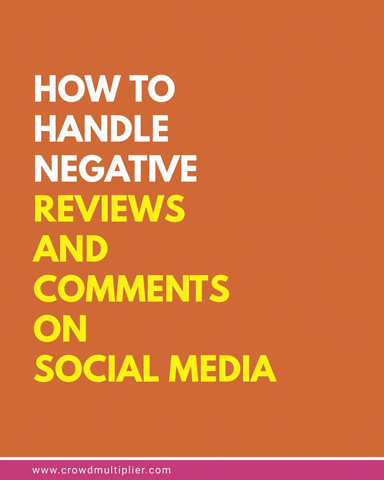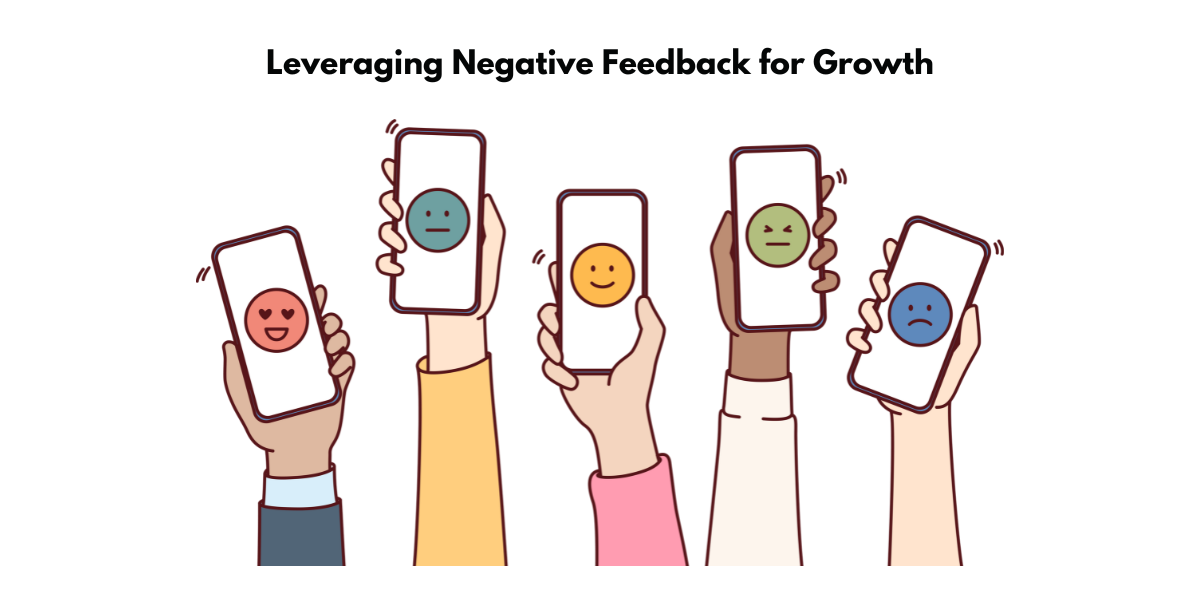Turning Negatives into Positives: An Introduction
Understanding the Impact of Negative Reviews
Negative reviews might initially seem damaging, but they offer a unique perspective on your offerings that could be missing from positive feedback. Surprisingly, they can shape a prospective customer’s opinion in a way that ends up being beneficial for your brand. By showing potential customers that you’re transparent and willing to improve, you also show that you’re on their side. Imagine yourself browsing through a product page: Aren’t you more likely to trust a brand that has a mix of reviews rather than only flawless ratings?
The Opportunity in Every Critique
Each piece of feedback, especially the tough-to-hear kind, is a free audit of your business through the eyes of those who matter most – your customers. It’s like receiving insider information on areas where your business could do better. Rather than taking these critiques personally, embrace them as valuable insights that might have otherwise gone unnoticed. Negative reviews offer an opportunity to learn something new, peak behind the curtain, and make changes that could transform the customer experience for the better.

Crafting the Perfect Response to Negative Reviews
Respond Promptly and with Poise
Recognize that timely responses are more than courteous; they’re expected. Over 40% of customers desire replies within an hour. However, promptness should not come at the cost of quality. Even when you’re quick to the draw, maintaining composure and professionalism is crucial. A response that’s both swift and sincere does wonders in showing your commitment to customer satisfaction. Always take a moment to collect your thoughts, organize a thoughtful reply, and address the concerns raised with the level of seriousness they deserve.
Personalization is Key: Tailoring Your Replies
Imagine getting a handwritten note as opposed to a generic form letter – that’s the level of personalization that resonates. Tailoring your replies means acknowledging the customers by name and referencing specific points from their feedback. This shows that you’re not just scanning for keywords to plug into a canned response. Instead, you’re truly understanding their experience and crafting a unique reply. This level of personal attention is likely to transform an unhappy customer into a brand advocate.
Guidelines for Public Interaction with Unhappy Customers
Acknowledge, Apologize, Act: The Three A’s Strategy
When grappling with negative feedback, the “Three A’s” strategy becomes your trusty guide: Acknowledge the customer’s feelings and the inconvenience they’ve experienced, genuinely apologize for the specific shortcomings in their experience, and describe the actions you’ll take to rectify the situation or prevent a recurrence. This approach shows customers that their concerns are heard, their feelings are valid, and that they can expect a proactive and corrective approach from you. It’s about building trust, demonstrating humility, and affirming your dedication to excellence.
Taking the Conversation Offline When Necessary
Sometimes, the digital space isn’t the most conducive to solving complex issues. Knowing when and how to take a conversation offline is a tactful part of handling negative reviews. Offer the customer a direct line to someone who can help, whether it’s an email address or a phone number, but be the first to reach out through these channels if possible. This gesture affirms your commitment to their satisfaction and also helps in managing the public narrative. By suggesting a more private dialogue, it’s clear you’re not avoiding the problem but are keen on resolving it thoroughly.

Leveraging Negative Feedback for Growth
Using Criticism as a Catalyst for Improvement
Criticism, when viewed through the right lens, acts as a powerful catalyst for change. It pushes you to scrutinize areas you may have overlooked and kickstarts a process of improvement that aligns with customer expectations. Analyze the feedback you receive, look for trends or recurring themes, and tackle those issues head-on. This proactive attitude not only enhances your product or service but can also increase customer loyalty. Clients value businesses that listen and evolve based on their input—it’s a clear indicator that their voice matters to you.
The Hidden Benefits: Trust-Building and Transparency
Embracing negative reviews publically addresses an often unspoken customer concern: trustworthiness. When you’re transparent about imperfections and show a willingness to resolve them, you foster a sense of sincerity and reliability. This in turn can lead to stronger customer relationships and enhanced brand loyalty. Sharing both positive and negative feedback gives a fuller picture of who you are as a company and signals to customers that you have nothing to hide. Ultimately, this transparency not only projects authenticity but can also serve as a distinguishing factor in a market replete with competition.
Moving the Conversation Offline: When and How to Take Action
Recognizing the signs that a conversation should be moved offline
Keep an eye out for indications that a customer may need more hands-on assistance than a public forum can provide. This approach safeguards the customer’s privacy and sets the stage for a more personal resolution.
Preparing a response plan for negative reviews
Start by establishing standard operating procedures for your team that include acknowledging the issue openly, expressing empathy, and offering a clear path toward resolution. Equip your staff with talking points that reflect current policies and past successful resolutions, ensuring consistency and professionalism.
Guidelines for privately contacting the reviewer
Provide the customer with direct contact information and offer flexible timings to connect. Ensure that the customer knows their issue is being prioritized and that there is a dedicated team or individual ready to resolve their concerns. It’s also helpful to establish the next steps and set realistic expectations for follow-up.
Setting up a protocol for customer support follow-up
This protocol should detail who is responsible for initiating follow-up, the timelines for doing so, and the method of contact, whether it be via email, phone, or other channels. Ensuring that each customer receives a personalized check-in after their issue has been addressed not only reinforces the resolution but underscores your commitment to their continued satisfaction.

Monitoring outcomes and adjusting strategies as needed
Use these data points to fine-tune your approach, such as improving response times, enhancing training methods, or revising your review response templates. Regularly reassess these strategies to ensure they remain in line with evolving customer expectations and the dynamics of online platforms.
Utilizing Tools for Effective Review Management and Reputation Enhancement
Implementing Review Monitoring Software
Leveraging review monitoring software can be a game-changer in managing your business’s online reputation. By setting up review alerts, you’re instantly notified about new feedback, ensuring that you never miss a beat. These platforms can track reviews across multiple sites, saving time and allowing for quick, coordinated responses. It also provides a comprehensive dashboard to analyze trends and customer sentiment over time. Such tools are integral for businesses aiming to keep their finger on the pulse of customer feedback without being overwhelmed by the volume of data.
Crafting Templates for Quick and Professional Responses
Templates serve as a foundational guide for ensuring consistency and professionalism in your review responses but remember that the secret ingredient is personalization. Start with a structure that acknowledges the feedback, offers an apology or empathy, and addresses a resolution or next steps. Then, sprinkle in personal touches based on the customer’s individual experience. Having a selection of templates for different scenarios can streamline the process, but each response should be modified to fit the specific case at hand, avoiding a robotic or impersonal tone.
Analyzing Review Patterns for Business Insights
Look for common threads or recurring issues that multiple customers mention, as these are areas ripe for improvement. This data can also reveal strengths that you might want to double down on in your messaging. Seasonal patterns can inform you of the high and low points in customer satisfaction across the year, helping in forecasting and planning. Advanced analytics might even segment feedback by demographics, providing a deeper understanding of different customer segments. Treat this analysis as an ongoing process, feeding into a strategy of continuous enhancement.

Utilizing Social Media Platforms for Reputation Management
Social media platforms give you a real-time pulse on customer sentiment and provide an avenue for engaging dialogue. By actively monitoring mentions of your brand, you can swiftly address concerns, clarify misconceptions, and showcase excellent customer service publicly. It’s also a space to celebrate positive feedback and stories from satisfied customers, further strengthening your reputation. Plus, these platforms can serve as informal feedback channels where proactive engagement can prevent the escalation of issues to formal review sites.
Encouraging Positive Reviews to Counterbalance the Negative Ones
A calculated approach to encourage positive reviews can counterbalance negative feedback’s impact. Customers often need just a simple nudge to share their experiences. You can kindly request reviews post-purchase via email or with a follow-up interaction. Always express gratitude for their business and make the reviewing process as easy as possible with direct links to your preferred platforms. Remember to engage with positive reviewers as well by thanking them, which can encourage others to leave reviews, too.
Integrating Review Management with Overall Customer Service Strategy
Review management shouldn’t operate in isolation; it’s an integral part of your overall customer service strategy. This integration means review responses should reflect your brand’s voice and adhere to the same standards as any other customer service channel. Incorporate feedback from reviews into staff training, service adjustments, and product development. By doing so, you demonstrate a holistic approach to customer care, showing that every piece of feedback informs your business decisions and contributes to enhancing the customer experience.

Conclusion:
Responding to negative reviews is crucial for business growth and online reputation management, as it shows a commitment to customer service and offers an opportunity for improvement. Negative reviews add authenticity to feedback and highlight potential areas for enhancement. Thoughtful, calm responses can resolve customer issues and may lead to updated more positive reviews. Strategies for handling negative feedback include a sincere apology, problem-solving solutions, personalization, and potentially shifting the conversation to a private channel. Preventing negative reviews and defending online reputation requires excellent customer service, a separate space for direct complaints, quick feedback response, transparent product/service information, and following through on commitments.







